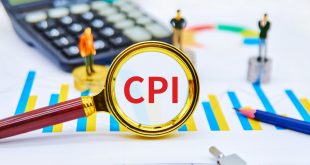US stocks ended mixed on Friday at the end of a volatile week, with investors and traders busy digesting a mixed set of bank earnings and a bigger-than-expected drop in U.S. retail sales.
The S&P 500 and Nasdaq closed at the highs of the trading day. The Nasdaq fluctuated between gains and losses after a 2.5% drop on Thursday, but closed up 0.59% at 14,893.75.
The Dow underperformed, dropping more than 1% at session lows as the index’s bank stock components declined after delivering earnings. The index closed down 0.56% at 35,911.81.
Economic Data
New economic data came in weaker-than-expected on Friday, adding to the risk-off tone in markets. U.S. retail sales fell 1.9% in December month-on-month, missing estimates for an only 0.1% dip and marking the biggest drop since February 2021. November’s sales were also downwardly revised to show 0.2% monthly increase, compared to the 0.3% rise previously reported.
Other Developments
JPMorgan Chase (JPM) shares fell 6% after the company posted lower-than-expected fourth-quarter trading revenues and rising costs as compensation expenses increased. Citigroup (C) shares also fell after posting a similar miss on fixed-income and equities trading revenues for the quarter.
Wells Fargo (WFC) shares rose, on the other hand, after posting quarterly revenue that topped estimates as both commercial and consumer loans picked up at the end of last year.
Investors this week have been weighing concerning signs of lingering price pressures across the U.S. economy against assertions from key central bank officials that the Federal Reserve is ready to take action to bring down inflation.
In Fed Governor Lael Brainard’s hearing before the Senate Banking Committee on Thursday, she suggested the central bank could begin raising interest rates — a move that would tighten financial conditions and help bring down inflation — “as soon as asset purchases are terminated.” The Federal Reserve is currently set to end its asset-purchase tapering process in March.
Given the low volumes, thin liquidity conditions typical of late-Friday trade, such a move would likely have to wait until next week. Some might argue that Friday’s fundamental developments (weaker than expected US December Retail Sales and January Consumer Sentiment figures) suggest a higher EUR/USD making sense.
There isn’t much by way of tier one US data next week, but if the NY and Philly Fed surveys for January are also sufficiently week, that could back up this argument. But near-term weakness, which will in part be a reflection of surging Omicron infections in the US, will not worry the Fed, which is much more focused on elevated inflation and the tight labour market.
Also Read
 Noor Trends News, Technical Analysis, Educational Tools and Recommendations
Noor Trends News, Technical Analysis, Educational Tools and Recommendations





